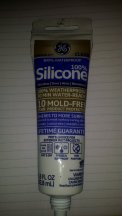Bruno8437
Super Active Member
The super glue is a cyanoacrylate adhesive. They don't do so well in constant wet environments. Silicone is pretty inert and will hold up when cured. The EM-1 is lactobacillus and shouldn't do anything to the cured silicone. Silicone tubing and gaskets are used in biotech all the time.but your missing the part about the em1 man, that's my concern, I've got no clue what it can or can't eat through, to make the super glue disappear it's gotta be able to eat through some things, I'm thinking about just trying the most expensive shit, then duck taping it to hell. if that don't work, then I'll have to try and drill it out, or one of the other ideas, this thing is massive! 2 plants and should yield me close to 2 pounds I'm hoping! so not going to mess it up
I would get some sandpaper and scuff up the tote around the grommet to so the silicone can get a better bite.



